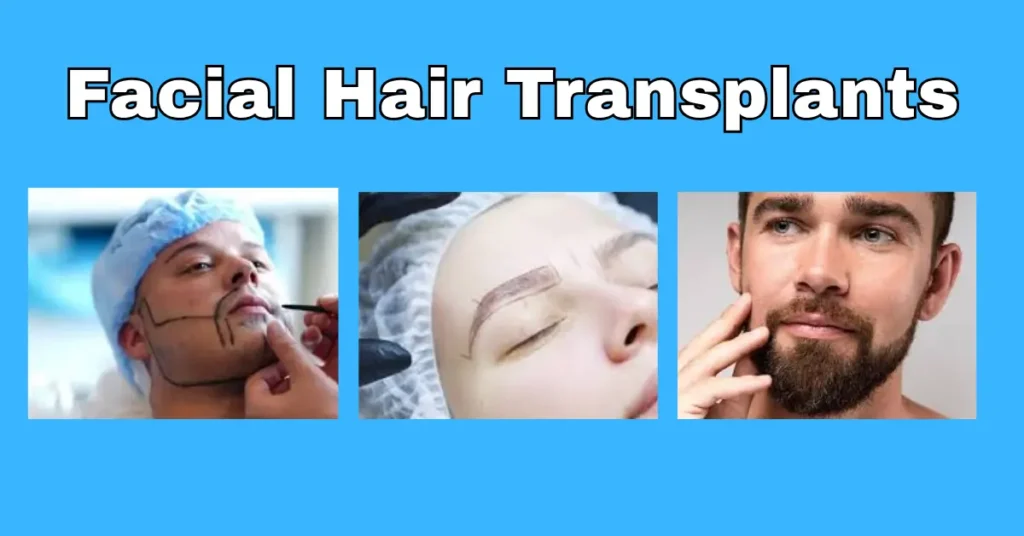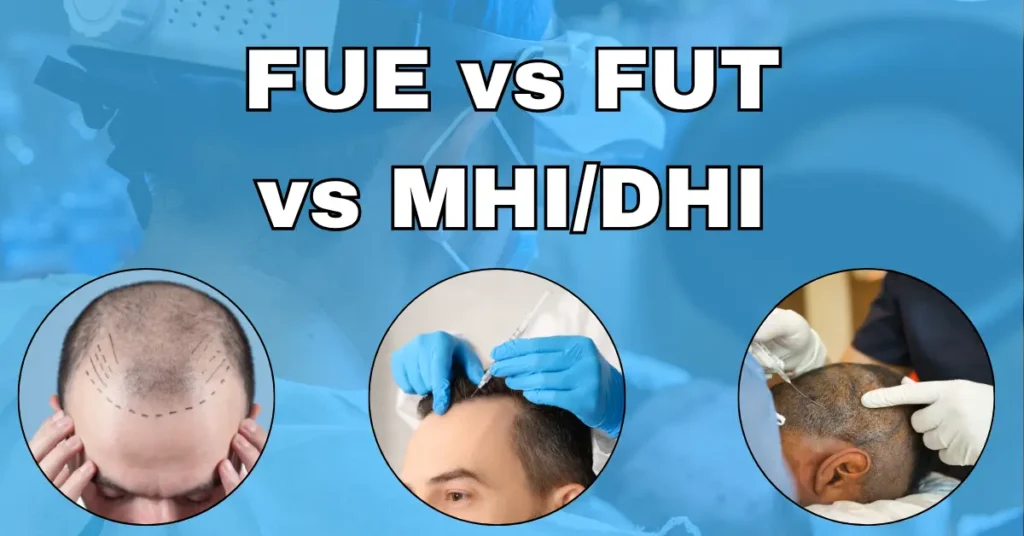Hair Transplant Procedure for Women: A Complete Guide to Hair Restoration and Regrowth is your complete resource for understanding how modern types of hair transplant techniques help women regain natural volume and confidence. The hair transplant procedure safely moves healthy hair follicles from a donor area to thinning or bald spots, offering a long-term solution for hair loss caused by genetics, hormonal changes, or stress.
Designed specifically for female hair patterns, this treatment for hair loss restores natural density without visible scars or damage. Whether you’re struggling with a receding hairline, postpartum shedding, or androgenetic alopecia, this guide explains how procedures like Follicular Unit Extraction (FUE), Follicular Unit Transplantation (FUT), MHI, and DHI methods provide lasting hair regrowth with minimal downtime. Beyond improving your hair, it rebuilds confidence and enhances your overall appearance. If you’re looking for a safe, natural, and effective solution to hair loss, this guide is your first step toward renewed self-esteem and beautiful, healthy hair.
Understanding Female Hair Loss
Before considering a hair transplant surgery, it’s essential to know why women lose hair. Unlike men who may develop defined bald spots, most women experience diffuse thinning — where hair becomes sparse across the entire scalp rather than specific areas.
Common Causes of Hair Loss in Women
- Hormonal Changes:
Pregnancy, menopause, and thyroid imbalances can cause hormonal shifts that disrupt the hair growth cycle. - Androgenetic Alopecia (Female Pattern Baldness):
This hereditary type of hair loss leads to gradual thinning, especially around the crown and parting line. - Stress and Lifestyle:
High stress, poor diet, and irregular sleep patterns can weaken hair follicles and cause shedding. - Medical Conditions:
PCOS, anemia, and autoimmune diseases like alopecia areata can trigger hair thinning or baldness. - Hair Styling Damage:
Tight hairstyles, harsh chemicals, and frequent heat styling can cause traction alopecia — a type of hair loss caused by continuous pulling or damage to the hair follicles.
Understanding your type of hair loss helps a hair transplant surgeon determine whether a hair restoration procedure is suitable for you.
Who Is a Good Candidate for a Hair Transplant?
Not every woman who loses hair is eligible for surgery. Since women often have diffuse hair loss, even the donor site may be affected.
You’re an ideal candidate if you:
- Have localized bald spots or thinning due to burns, trauma, or surgery.
- Have a stable donor area with sufficient hair density.
- Suffer from traction alopecia from tight hairstyles.
- Want to restore eyebrows or correct a receding hairline.
Women with overall thinning may not benefit much, as both the donor and recipient areas could be compromised.
How Does a Hair Transplant Procedure for Women Work?
A hair transplant surgery transfers healthy hair follicles from a donor site (usually the back or sides of the scalp) to a recipient area where hair is thinning. These transplanted hairs continue to grow naturally.
There are several types of hair transplant procedures available today, and choosing the right one depends on your hair type, goals, and the hair transplant surgeon’s recommendation.
1. Follicular Unit Transplantation (FUT)
Also known as the strip method, FUT involves removing a thin strip of scalp from the donor area. The strip is divided into smaller hair grafts, each containing 1–4 follicles, and implanted into the recipient area.
Advantages:
- Best for women who prefer long hair (the scar hides easily).
- Allows a large number of hair grafts in one session.
Disadvantages:
- Leaves a linear scar.
- Slightly longer recovery time.
2. Follicular Unit Extraction (FUE)
Follicular Unit Extraction (FUE), one of the most advanced types of hair transplant techniques, removes individual hair follicles directly from the donor site and implants them into thinning areas.
Advantages:
- No visible linear scar.
- Faster healing and minimal downtime.
- Suitable for women who prefer short hairstyles.
Disadvantages:
- More time-consuming.
- Slightly higher cost due to precision tools and expertise.
3. DHI (Direct Hair Implantation) and MHI (Modified Hair Implantation)
DHI and MHI methods are newer, refined versions of FUE hair transplantations. They use specialized tools to extract and implant follicles simultaneously, ensuring natural angles, denser results, and faster recovery.
These modern types of hair transplant procedures provide a seamless, natural finish and reduce the risk of scarring or trauma to the scalp.
Step-by-Step Hair Transplant Experience for Women
1. Consultation and Diagnosis
Your journey begins with a consultation with a skilled transplant surgeon. The doctor will:
- Examine your scalp and determine the type of hair loss.
- Evaluate the donor area for healthy follicles.
- Discuss realistic hair transplant expectations and potential outcomes.
- Recommend the most suitable hair transplant technique — FUT, FUE, DHI, or MHI.
Blood tests or scalp analyses may be done to check for underlying health issues before the procedure.
2. Pre-Operative Preparation
Before the surgery, your doctor may advise:
- Avoiding alcohol or blood-thinning medicines.
- Washing your scalp gently.
- Stopping chemical treatments.
3. The Hair Transplant Procedure
The hair transplant surgery is done under local anesthesia and usually takes 4–8 hours.
Steps include:
- Donor Site Preparation: Hair in the donor area is trimmed and numbed.
- Extraction of Hair Grafts:
- In FUE, follicles are extracted individually.
- In FUT, a scalp strip is removed and divided into units.
- Recipient Area Creation: Tiny incisions are made in the recipient area to ensure natural direction and density.
- Implantation: Each hair graft is carefully implanted. Depending on the solution for hair loss, 1,000 to 3,000 grafts may be used in one session.
4. Recovery and Aftercare
Post-surgery care is vital for new hair growth and optimal healing:
- Expect mild redness or swelling that fades in a few days.
- Avoid washing hair for 48 hours.
- Skip gym workouts or direct sunlight for two weeks.
- Take prescribed medications as directed by your hair transplant surgeon.
Some transplanted hair may fall out temporarily after two to three weeks — this is normal. Fresh hair regrowth starts around 3–4 months, and full results appear within 9–12 months.
Benefits of Hair Transplant Surgeries for Women
- Permanent Hair Restoration:
The transplanted hair resists hormonal hair loss and lasts a lifetime. - Natural Look:
Expert transplant surgeons design hairlines that blend seamlessly with your natural growth. - Improved Confidence:
A fuller head of hair enhances your appearance and emotional well-being. - Low Maintenance:
Transplanted hair can be styled, colored, and treated just like natural hair. - Safe and Effective:
Modern hair transplant techniques like FUE, DHI, and MHI minimize scarring and ensure faster recovery.
What Results Can Women Expect?
Results depend on donor density, surgeon skill, and aftercare.
- New hair growth begins within 3–4 months.
- Noticeable improvement in 6–8 months.
- Final, natural results within a year.
Realistic hair transplant expectations are key. While you might not regain your original density, the procedure can significantly improve thickness and coverage.
Alternative Treatments and Home Remedies
If you’re not ready for surgery, you can explore non-surgical solutions to hair loss, such as:
- PRP Therapy: Uses your blood plasma to awaken dormant follicles.
- Low-Level Laser Therapy (LLLT): Enhances blood flow and strengthens follicles.
- Topical Minoxidil: Clinically proven to promote hair regrowth.
- Nutritional Supplements: Iron, biotin, and vitamin D support healthy hair.
- Hair Treatment at Home for Hair Fall: Regular oiling with coconut, castor, or rosemary oil helps improve scalp health.
These methods can help delay or support hair restoration before considering surgery.
Choosing the Right Hair Transplant Surgeon
The success of hair transplant surgeries depends largely on the hair transplant surgeon’s expertise. Choose a qualified transplant surgeon who:
- Specializes in female hair restoration.
- Has experience in FUE, FUT, MHI, and DHI methods.
- Offers personalized plans based on your type of hair loss and donor area health.
- Shares real hair transplant experience and patient reviews.
Remember, the goal isn’t just hair regrowth — it’s achieving natural, long-lasting beauty.
Conclusion: Empowering Women Through Hair Restoration
A hair transplant procedure for women is more than cosmetic — it’s transformative. It restores confidence, enhances appearance, and provides a permanent solution to hair loss. With innovative techniques like FUE, FUT, MHI, and DHI, women can now enjoy natural, long-term results with minimal downtime.
If you’re struggling with thinning hair or bald spots, consult an experienced hair transplant surgeon to discover the best types of hair transplant options for your needs. With expert care, patience, and the right solution for hair loss, your journey toward healthy new hair growth and renewed self-confidence starts today.

















